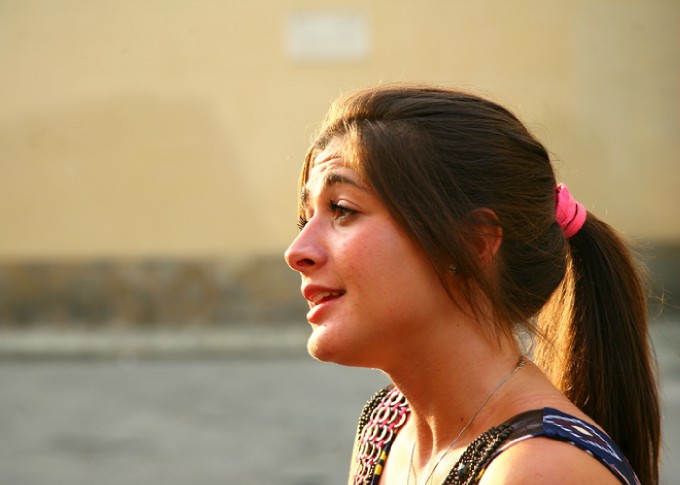I think that you are commenting on: ‘SUBJECT to BACKGROUND DISTANCE”. (Technical Term)
That consideration is really important; especially so for Portraiture, which is akin to the shooting scenario of ‘Olaf’. (Please see the examples at the end of my commentary)
Sometimes, even more important, is the RELATIONSHIP (or ratio) between:
Camera to Subject Distance :: Subject to Background Distance
On your other thread, about Wide Angle Lenses, I posted an example, “Piano Bar”: note, in that example that the Subject to Background Distance was really not very far at all, only a few feet about 8 ft (2.5mtrs) – but the critical element is the Camera to Subject Distance was only about 4 ft (1.25mtrs) and that made quite a large ratio, between the two distances.
*
I believe I understand your meaning.
I prefer using “different” as the qualifier for the compound noun ‘Background Blur’.
*
Essentially, the main part of what we are discussing in this thread, are the ELEMENTS which go to constituting the SUBJECT SEPARATION or SUBJECT ISOLATION in our Final Image.
I think it is important to note that some are more quantitative elements, for example the Depth of Field and others are more qualitative elements, for example Bokeh – and there is also another element which can be used to create Subject Isolation: Post Production as was mentioned by John – this is an option which is often overlooked .
I think that we must consider LIGHTING as another element, if not the main element, in our quest for Subject Isolation.
***
Returning to the Original Post, Erik asks (my bold and underline for emphasis):
Without Erik’s permission, but trusting in his understanding - I want to touch on some of the THINKING which was likely involved in prompting this question:
It occurs to me that there is one of two (general) possibilities that predicated the question:
EITHER:
> the question wanted to ONLY know about Depth of Field - “to really isolate Olaf”
- OR -
> it was ASSUMED that Depth of Field was ‘the answer’ to the ‘Photographers vision’ - “to really isolate Olaf”
*
I interpreted Erik’s question to actually be closer to: “How do I achieve my vision, to really isolate Olaf?” and that’s why I answered in post # 14 (my bold and underline for emphasis):
*
As the conversation developed, various commentators touched on other aspects of Photography which comprise SUBJECT ISOLATION, but I don’t recall that LIGHTING was mentioned.
This contribution from me, simply seeks to round up and summarize the key tools that we have at our disposal to ISOLATE the SUBJECT in any shooting scenario.
*
Whatever the method(s) used, I think the outcome is the primary goal.
In achieving that goal, it is important to have knowledge of and some skills in ALL the options which are available to us as Photographers.
WW
EXAMPLES:
Here are two examples, using a “slow” F/4 lens, used at F/4 and F/5.6, to show the importance of:
> Subject to Background Distance
- AND -
> Lighting
to achieve SUBJECT ISOLATION:
Example #1
“Selfies”
#593236
EOS 5D EF24~105/4 IS @ 82mm;
F/4 @ 1/5s @ ISO1250;
IS-ON; M Mode; AWB; HH; Available Light (Flash from Subject's Camera Illuminates Subjects); JPEG SOOC
***
Example #2
“Italian Passion”
#593170-001
EOS 5D EF24~105 @ 105mm;
F/5.6 @ 1/250s @ ISO400
M Mode; AWB; HH; IS-ON; Available Light; JPEG SOOC
Images © AJ Group Pty Ltd (Aust) 1997~2015
Results 21 to 22 of 22
Thread: Depth of Field Help
-
25th January 2015, 04:11 AM #21
Re: Depth of Field Help
-
25th January 2015, 12:27 PM #22
Re: Depth of Field Help
Thanks again for the answer and clarification on the terminology. In short, I think the ratio above is key and perhaps not enough in my example to achieve my vision. DOF is largely (as you pointed out) a quantitive result, based on some factors - in which the range is largely acceptably in focus (based on assumed circle of confusion).
In some cases it can be used to isolate the image, but there is a larger factor that can be involved and that is the ratio Camera to Subject Distance :: Subject to Background Distance. In my example above where I achieved my vision (repeated below)

In this case I was relatively close to the main focus of the image, and thus the background (relative to the distance to the image) was far away. I think this reflects true in your two images as well, as the "background" in both is relatively far away from the subject matter. This is just much larger scale than my image above.
So returning to my thoughts above and how could I have reached the vision I had in mind, would be at 18mm/f3.5 and as close to Olaf as possible to render my desired composition, so as to maximize the distance in the background.
Interesting to think the results, and see how they would have differed. I think some more time behind the lens playing with settings and results will help. I can see two possible ways that could lead to my desired results, which wins I am not sure yet.

 Helpful Posts:
Helpful Posts: 



 Reply With Quote
Reply With Quote